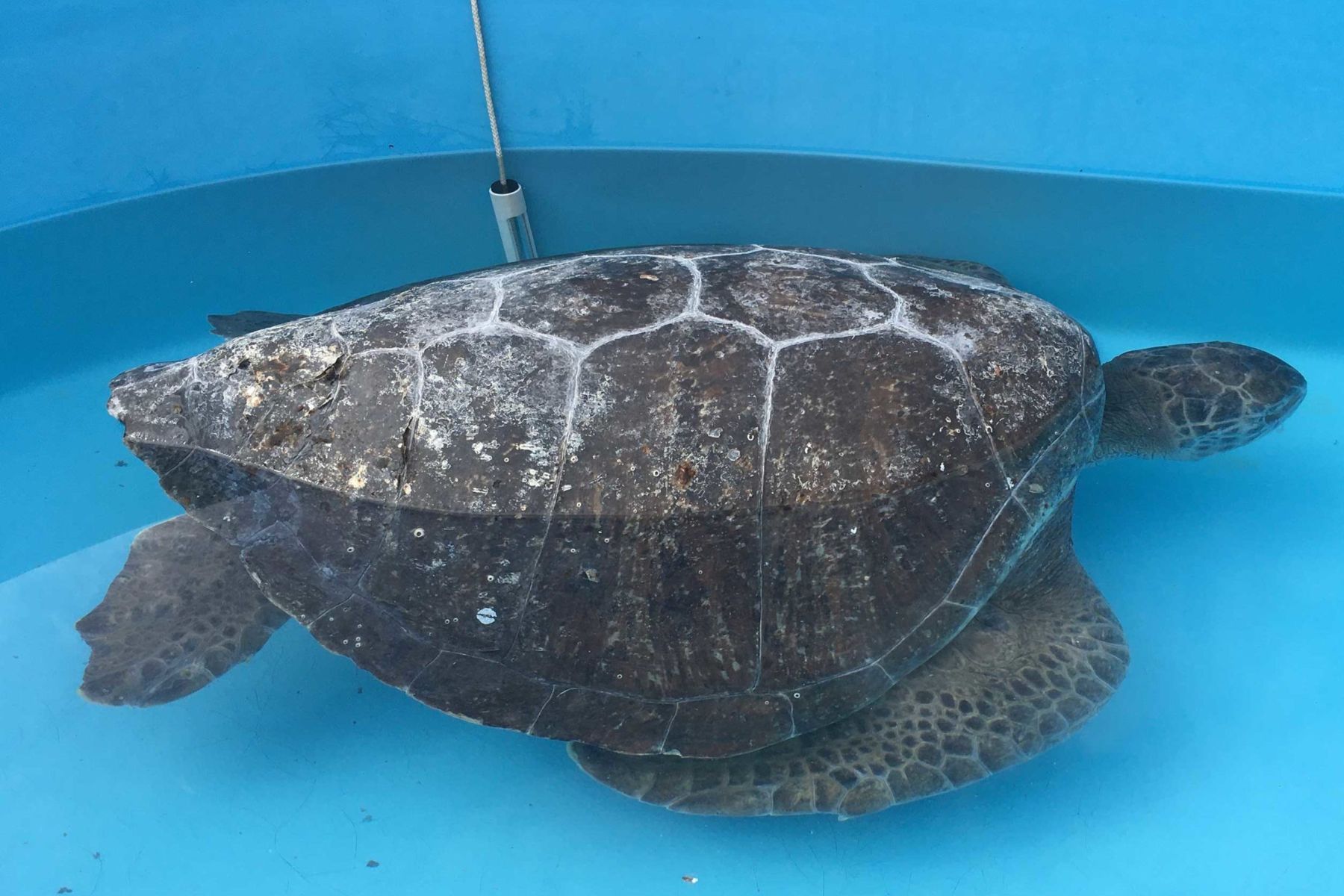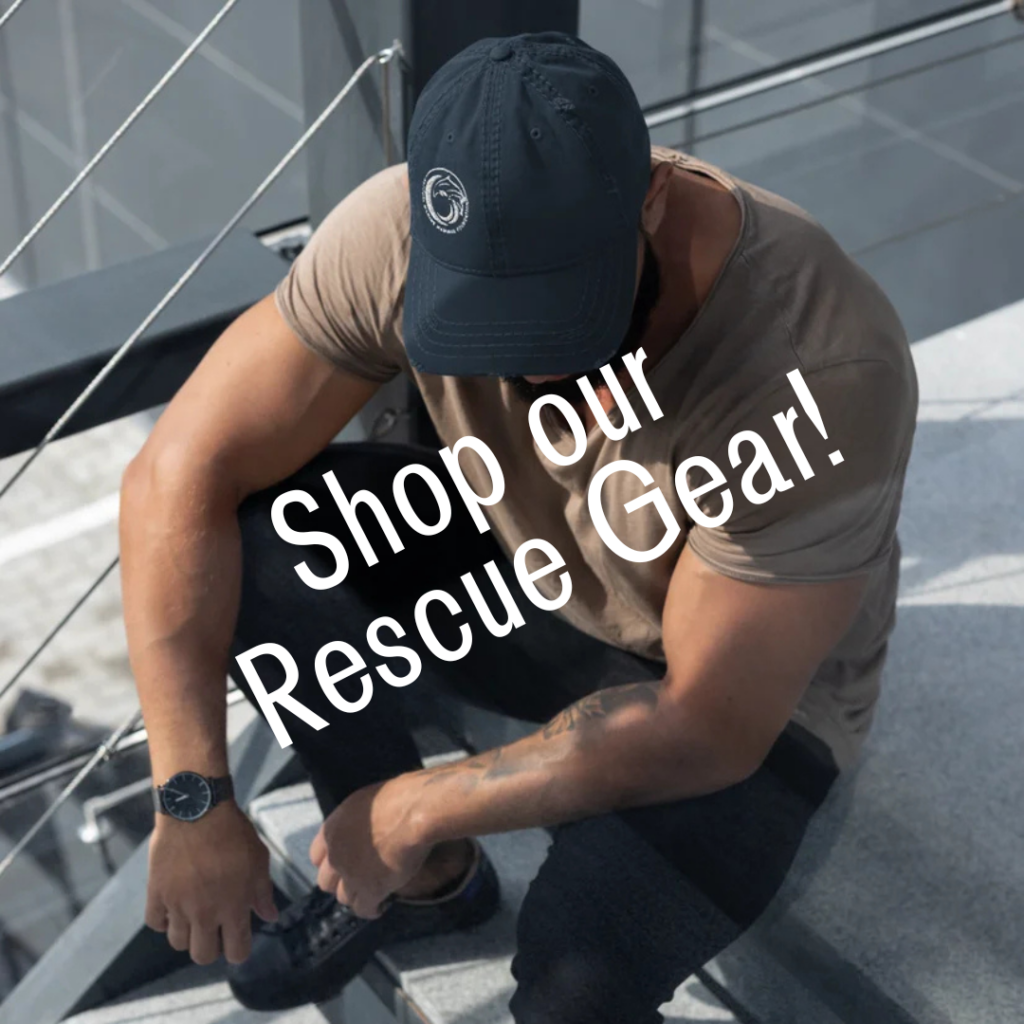Rescuing Marine Mammals
Marine mammals face serious threats, from entanglements in fishing gear to displacement by extreme weather events, that require expert intervention. Our Conservation Medicine Field Station, located in Charleston, South Carolina, serves as the central hub for our work in the southeastern U.S. Here, our researchers play a crucial role in responding to emergencies throughout the region. Partnering with NOAA Fisheries, state and local agencies, and stranding networks, our dedicated team of scientists, field biologists, and veterinarians works together to rescue entangled, out-of-habitat, and entrapped marine mammals. Through precise, coordinated efforts, we give these animals the best chance at survival.
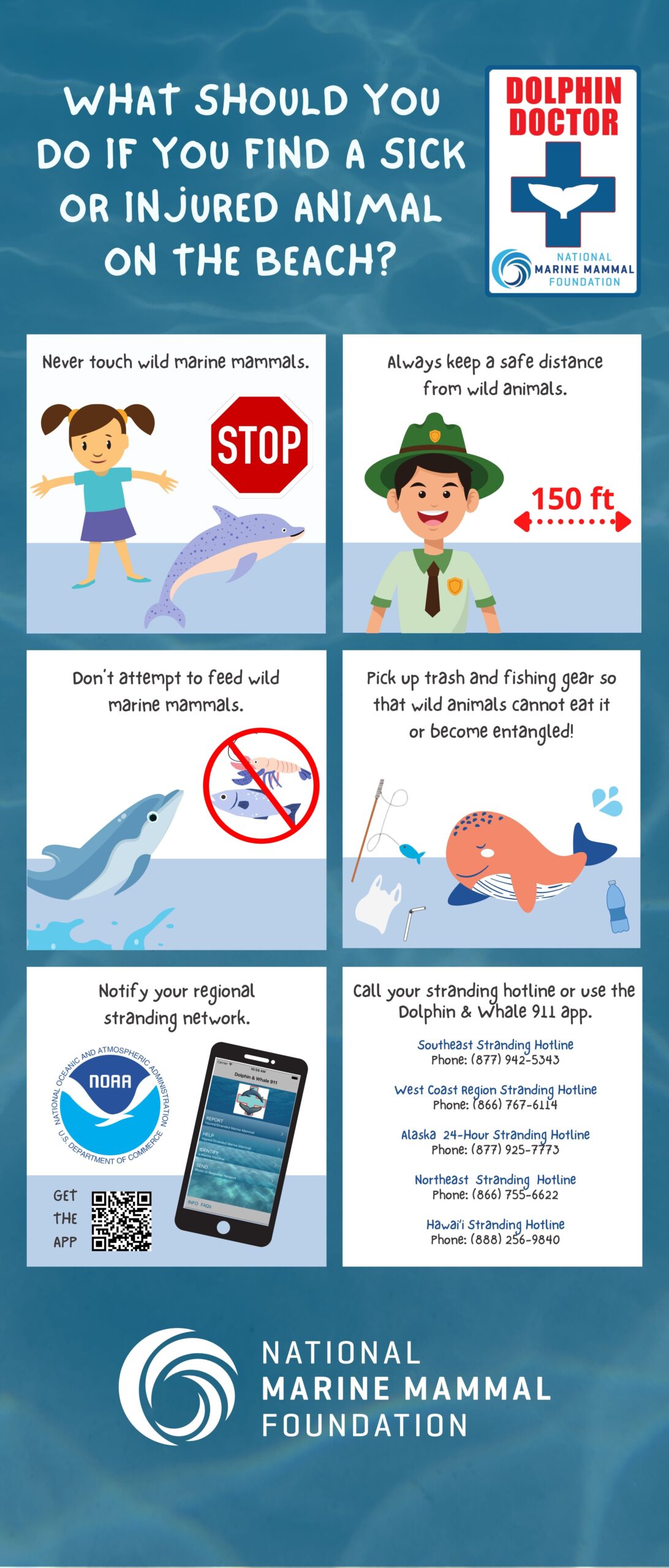
The Rescue Process
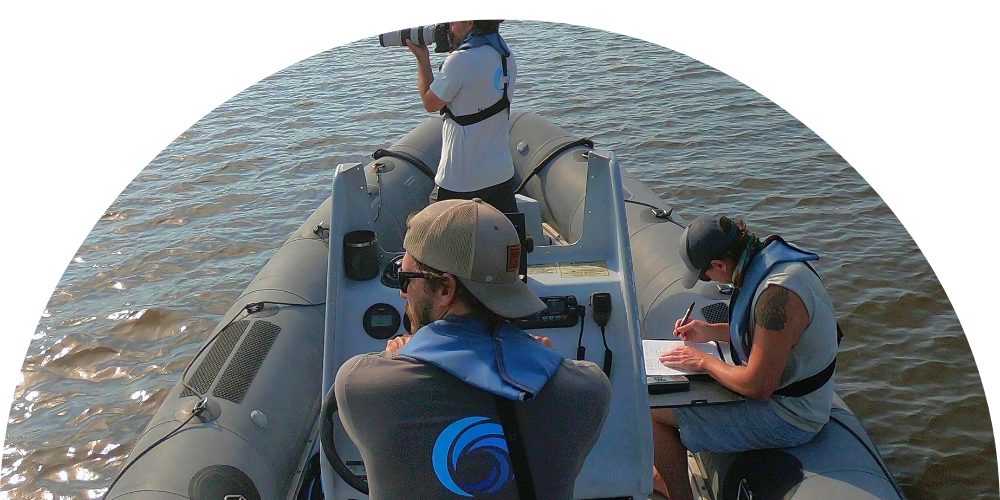 The rescue process begins when an at-risk animal is observed or reported. The team assesses the site, monitors the animal, and develops a strategic response plan. Roles, schedules, and resources are assigned to ensure each team member, from vessel operators to veterinarians, can work seamlessly. This critical phase lays the foundation for a safe, efficient, and effective intervention.
The rescue process begins when an at-risk animal is observed or reported. The team assesses the site, monitors the animal, and develops a strategic response plan. Roles, schedules, and resources are assigned to ensure each team member, from vessel operators to veterinarians, can work seamlessly. This critical phase lays the foundation for a safe, efficient, and effective intervention.
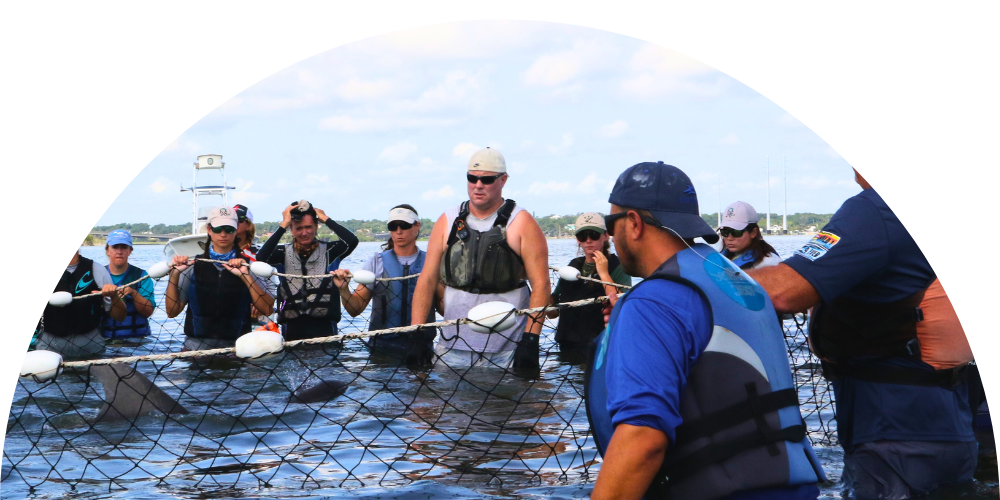 With decades of experience, our team uses specialized techniques and equipment to safely approach and handle each animal. Supported by skilled handlers, veterinarians, and vessel operators, we strive to provide a safe and efficient rescue for both the animals and people involved.
With decades of experience, our team uses specialized techniques and equipment to safely approach and handle each animal. Supported by skilled handlers, veterinarians, and vessel operators, we strive to provide a safe and efficient rescue for both the animals and people involved.
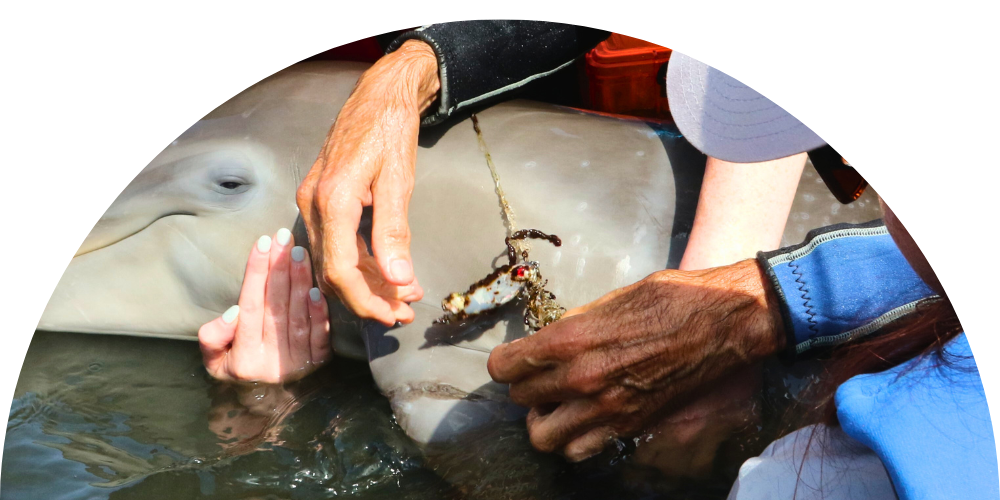 Veterinarians perform thorough health exams, treat injuries, and use diagnostic tools like blood samples to evaluate each animal’s condition. This helps determine whether it’s ready for release or requires further care.
Veterinarians perform thorough health exams, treat injuries, and use diagnostic tools like blood samples to evaluate each animal’s condition. This helps determine whether it’s ready for release or requires further care.
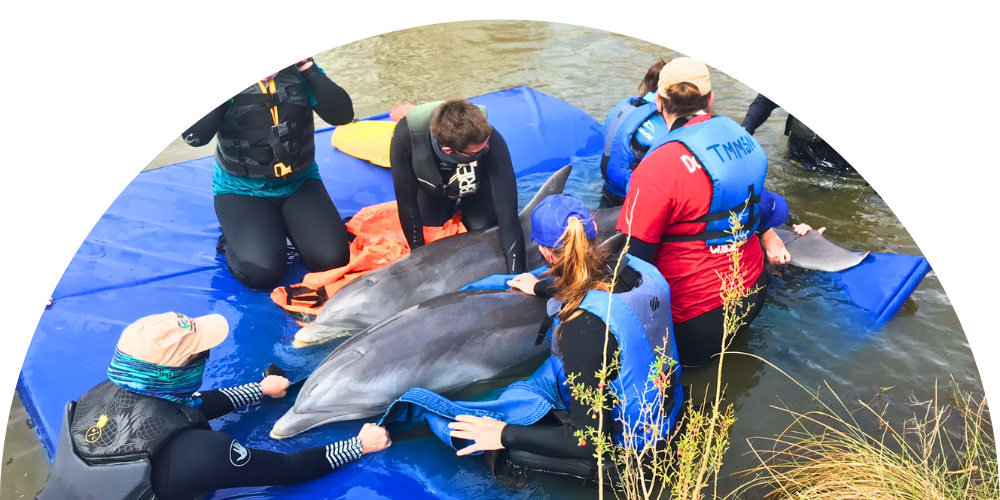 Once stable, animals are carefully released in locations where they have the best chance to survive. Our research helps guide these decisions, ensuring successful, safe reintegration.
Once stable, animals are carefully released in locations where they have the best chance to survive. Our research helps guide these decisions, ensuring successful, safe reintegration.
 When possible, we attach satellite tags and collaborate with partners to monitor the animal’s movements. This valuable data allows us and other researchers to conduct follow-up surveys, document recovery, and gain insights into the movements of dolphin populations in less-studied areas along the southeastern coast.
When possible, we attach satellite tags and collaborate with partners to monitor the animal’s movements. This valuable data allows us and other researchers to conduct follow-up surveys, document recovery, and gain insights into the movements of dolphin populations in less-studied areas along the southeastern coast.
 Everything we learn from local population monitoring and rescue informs our international conservation efforts. NMMF collaborates with communities worldwide to strengthen marine mammal rescue and rehabilitation practices. By sharing our expertise and resources, we help improve conservation strategies across the globe, protecting vulnerable species and ecosystems.
Everything we learn from local population monitoring and rescue informs our international conservation efforts. NMMF collaborates with communities worldwide to strengthen marine mammal rescue and rehabilitation practices. By sharing our expertise and resources, we help improve conservation strategies across the globe, protecting vulnerable species and ecosystems.
Rescue Stories
Support Marine Mammal Rescue
Join us in safeguarding marine mammals by supporting our rescue and conservation efforts. We rely on donations to respond whenever and wherever marine mammals are in distress. Your contributions help fund lifesaving rescue operations, veterinary care, conservation science, and outreach programs, making a meaningful impact for aquatic mammals and ecosystems worldwide.


